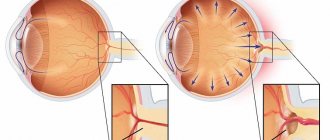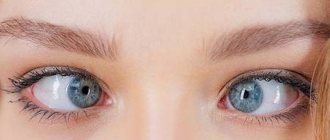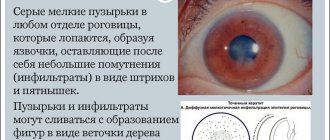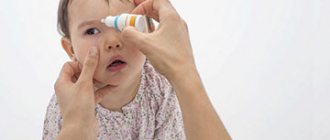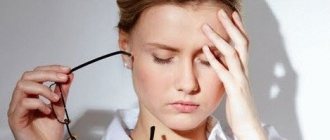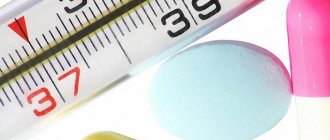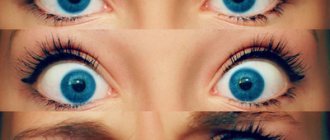We are often bothered by pain in a certain part of the head, but not everyone wants to see a doctor right away, blaming everything on ordinary fatigue or a cold on their feet. If we were more attentive to our own health, many diseases and complications could be avoided by starting treatment on time.
For example, a person often only has pain on the left side of his head, and he does not even try to understand his feelings and admit the presence of health problems, which is why a trip to the doctor is constantly postponed. Pain can be felt in any part of the head on the left - in the area of the crown, temple, face, back of the head - or specifically at some point - above or below the eyebrow, behind the ear, near the eyes, nose, etc.
The reasons for this condition can be completely different, and sometimes you simply cannot do without the prompt intervention of a doctor. It is important to know what can cause a headache on the left and how to deal with this or that ailment.
Migraine
If your head hurts severely on only one side - left or right, this may be a sign of migraine. A person experiences pain near the eyebrow, in the area of the orbit, temple, and back of the head on the left side, i.e. unpleasant sensations completely occupy the left side of the head. The pain radiates to the eye, teeth, and ear on the same side. The patient feels nauseous and does not tolerate exposure to bright light, loud sounds and other harsh stimuli. An attack can last several hours or even a whole day. Migraine attacks are not relieved by painkillers, so the patient must visit a neurologist. With its help, it will be possible to find out the causes or factors that cause such attacks in a person in order to avoid them in the future, as well as select special medications that will reduce the intensity of the attacks.
Cervical osteochondrosis
Another reason why the left side of the head hurts may be cervical osteochondrosis. In this disease, the intervertebral discs are affected, causing compression of some arteries leading blood to the brain. Lack of oxygen in the brain leads to spasms, severe pain (the strongest pulsation is felt at the temple), as well as other unpleasant symptoms: burning in the back of the head, neck, dizziness, fainting, tinnitus. When turning the head and moving the eyes, the pain may intensify.
If you have problems with the cervical spine, you should consult a neurologist. Osteochondrosis must be treated comprehensively, addressing not only the pain, but also its immediate cause.
Stroke
One of the serious problems in which the left side of the head hurts is a stroke. When a person has a stroke, the pain increases suddenly and becomes unbearable, and the greatest pulsation is observed in the temple area due to disruption of the brain vessels. There is confusion of consciousness, loss of orientation in time and space, fainting, coordination, speech, memory are impaired, vision in one eye is reduced, and the patient feels sick. With such symptoms, immediate hospitalization is required, otherwise the consequences can be very dire. To recognize a stroke, you need to ask the patient to smile, say some phrase, and raise his hands up. Usually he will not be able to perform even these simplest actions.
Brain tumor
When only one part of the head hurts, it may be a sign of a brain tumor. Pain at a certain point does not always indicate a tumor in the same place. It’s just that a neoplasm can disrupt the functioning of individual brain structures, which causes unilateral pain near the temple, in the front of the face, in the back of the back of the head, at the top near the crown or at the bottom closer to the neck.
If you have such symptoms, you should immediately go to the doctor, since treatment of tumors is effective in the early stages of the disease. Any neoplasm is extremely dangerous, and for a brain tumor the danger increases due to its location, but doctors are now able to fight this disease. Chemotherapy, cryosurgery, radiosurgery and other modern treatment methods have proven their worth in the fight against brain tumors.
Help at home
There are situations when a left-sided headache occurs after experiencing stress or fatigue; in this case, you can reduce the symptoms of pain based on the following recommendations:
- To relieve signs of pain in the left hemisphere of the head , you can take one tablet of an anesthetic drug such as Ibuprofen, Aspirin or Spazmalgon.
- The left hemisphere of the head may hurt due to overstrain of the back and cervical muscles. It is possible to relax such pains with the help of massaging movements.
- If the headache is not that severe, it may be possible to relieve it by applying a cold compress to the symptom area.
- Relieve left-sided head pain, perhaps by washing with cool water or taking a hot shower.
- When you have a headache, it is not enough to just take a painkiller; sometimes it is useful to go for a walk outside.
- Aromatherapy or bath using aromatic oils: lavender, mint, pine needles, lemon, rose or sweet orange.
- Apply citrus peels with the white side or a leaf of white cabbage to the area where the headache hurts.
- To relieve left-sided headache with low blood pressure, you need to drink one cup of strong tea or coffee drink.
- If the cause of the headache was a migraine, the patient is advised to place a towel soaked in hot water on the sore area of the head.
- It is advisable to exclude all irritating sounds and aromas, and turn off the lights.
If pain in the left hemisphere of the head occurs due to a stroke or brain cancer, you should not delay treatment. In this case, to prevent the patient from getting worse, urgent medical attention is needed, since home treatment under such circumstances can adversely affect the patient’s well-being.
Colds and their consequences
Colds (flu, ARVI, etc.) themselves contribute to the occurrence of headaches, but most often they are not one-sided. A stuffy nose, a cold on the lips or other parts of the face, a sore throat and other similar “little things” are already unpleasant sensations. And if complications arise from incorrect or delayed treatment, then there may be even more problems. Sinusitis or other types of sinusitis lead to pain from the inflamed sinus (near the nose, in the forehead above the eyebrow, etc.).
When otitis media develops, a person experiences severe pain in the affected ear, but the pain is not concentrated in one point, but radiates to the temple, back of the head, teeth, etc. Cold muscles also lead to severe pain when turning the head, movements of facial muscles, eyes or jaws.
To avoid complications due to colds, it is necessary to pay attention to even subtle health problems. It is better to be properly cured in three days than to experience cold symptoms for weeks and then suffer from complications.
Preventive measures
Photo 2. Walking in the fresh air is the prevention of all diseases.
Source: Flickr (Nicholas Gloster). To prevent the occurrence of left-sided headaches, it is recommended to follow the following preventive measures:
- Change your diet . Headaches can be re-triggered by foods containing cholesterol, so you should avoid them first. In addition, this restriction helps clean the blood vessels.
- Get rid of bad habits . Smoking and alcoholic drinks constrict blood vessels, which causes spasm and, as a result, headaches.
- Take more walks in the fresh air . Walking relieves emotional tension and saturates the body with oxygen. The best time for walking is in the evening before bed.
- Rest . If you feel tired during the day, do not wait for a night's rest. Provide half an hour of rest, sleep if possible.
- Find the right orthopedic pillow . This will relieve tension from the neck and relieve pressure on the blood vessels.
Sick teeth
If you do not treat your teeth in time, pain will not keep you waiting. When decay reaches a nerve, pain spreads along that nerve to other parts of the jaw and face. In the future, diseased teeth will cause pain in the temple area, near the ear, or even on the entire corresponding half of the head (from the crown to the base of the neck). Similar problems can arise due to gum disease, malocclusion or teething. Dental treatment and correction of other oral defects is the field of activity of a dentist. It should be visited for preventive purposes, even in the absence of any problems, once every six months.
Musculoskeletal problems
Sometimes pain in the left side of the head is a consequence of different leg lengths in a person. If your left leg is much shorter than your right leg due to injury, spinal curvature, or birth defect, you may experience aching headaches on the left side. In this case, the headache does not hurt in any one point, but along the entire corresponding side - in front, behind, below and above. It is impossible to completely get rid of such problems with the spine, but you can alleviate your condition. Therapeutic gymnastics, special massage, acupuncture and the purchase of special shoes help.
Diagnosis and treatment
If you cannot get rid of cephalalgia on your own, you should consult a therapist. The doctor will refer the patient to specialists:
- ENT;
- ophthalmologist;
- dentist;
- osteopath;
- neurologist;
- neurologist.
The patient may be prescribed a brain ultrasound, MRI, general blood and urine tests.
Treatment of each disease is strictly individual. For various reasons it can be used:
- antibiotics;
- vasodilators;
- warming ointments;
- physiotherapy;
- physiotherapy;
- massage.
Meteor dependence
On the one hand, headaches are also companions of weather-dependent people (they react to the slightest changes in the weather). Their pain is localized in the area of the temple, forehead and eyes. There is also aching in the bones of the skull and aching teeth. The pain is not strong, but it is so long-lasting and exhausting that the person has no strength left for anything, he constantly wants to sleep. In this case, it is difficult to get rid of pain, but you can alleviate your condition. You can simply massage your temple and scalp, refresh your face with cold water, and apply a cool compress. Everyone has their own ways of dealing with a mild headache. If such procedures do not help, you can take a proven pain reliever.
Eye problems, injuries to the face and head, disruption of cerebral vessels, inflammatory processes in nerve endings (for example, trigeminal neuralgia, when extremely severe pain is felt under the eyebrow) - all this can also lead to the appearance of a one-sided headache. Sometimes pain can be evidence of psychological problems (stress, fears, or even simple fatigue), the solution of which depends only on the person himself. In addition, you should always remember that pain in a certain place is not always associated with problems in this particular part of the body. Often pain occurs in another point of the face or head, which seriously complicates diagnosis. In order to begin treatment as quickly as possible, you need to describe to the doctor as fully as possible your feelings and symptoms, as well as the events preceding their appearance.
Causes
Experts identify several reasons that contribute to pain in the left side of the head. In most cases, these are external irritants, the influence of which can cause discomfort of a certain nature.
Uncomfortable sitting position
Staying in a certain position for a long time leads to numbness of the nerve endings located in the back of the head, and as a result, headaches localized on the left side. Changing the posture contributes to the gradual disappearance of pain.
Stressful situations
Numerous problems and conflicts provoke the occurrence of stress in the body, the reaction of which is a pain attack in the left side of the brain, because it is this hemisphere that is responsible for the manifestation of analytical abilities.
Costs of the profession
Representatives of certain professions, who spend most of their working time in a monotonous, stationary position, are prone to frequent pain attacks. The risk group includes:
- office workers,
- drivers,
- freelancers sitting for a long time in front of a computer monitor.
There are, however, internal factors that cause severe headache attacks. They can be both various ailments and serious diseases.
Migraine
A fairly common cause of pain on the left side of the head is considered to be migraine. This disease is characterized by pain in the area of the left temple, eye, forehead, including the upper jaw.
A migraine attack is accompanied by a complex of auditory, visual and tactile disorders: the patient has an increased reaction to
- smells,
- sounds,
- bright light;
- sometimes there are black dots flashing before the eyes,
- Hallucinations occur.
The attack can last from several hours to several days, after which powerlessness and fatigue sets in.
Also, symptoms of migraine can cause headaches if you are taking medications.
Glaucoma
The cause of paroxysmal pain is an increase in intraocular pressure. Painful sensations are often acute and localized in the left hemisphere and frontal lobe, also affecting the affected eye.
Paroxysmal hemicrania
The disease, whose symptoms resemble migraine, is characterized by frequent painful attacks that occur over a long period (even several years).
The headache affects the left hemisphere and is pulsating or boring, burning in nature.
The consequence of this pathology is damage to the eyeball, which turns red and sinks, while the pupil narrows and does not respond to external stimuli. As a rule, the disease affects women in adulthood.
Cluster headache
The attack develops at lightning speed, without warning, and occurs in an acute form. The patient experiences unbearable left-sided pain in the temporal and frontal parts, radiating to the eye. It feels like the pain is shooting into the eye and temple. Paroxysmal pain is accompanied by redness of the eye and hyperemia of the skin of the face. Sinus congestion may occur.
Osteochondrosis
A well-known disease in which salt deposits occur in the spine. This contributes to compression of the cervical artery and poor circulation. The consequence is attacks of headaches and frequent dizziness associated with insufficient oxygen supply to the brain tissue.
Infections and inflammation
The initial stages of the development of these processes are accompanied by pain in the left (right) side of the head. A painful attack occurs after exposure to the wind in cold weather, a strong draft, or under air conditioning. Pathologies of the teeth or gums are also a provoking factor in the occurrence of pain.
Meteor dependence
People who are weather-dependent can also experience headaches due to minor changes in climate and weather conditions. The symptom usually occurs before it rains or snows. The unpleasant aching character continues for a long time and causes discomfort in the forehead, temple, ear, and crown of the head.
Traumatic brain injury
Severe and prolonged attacks of headache accompany people who have suffered traumatic brain injuries, as well as those with congenital pathologies of the musculoskeletal system. Moderate pain syndrome can be observed in patients who have suffered a stroke, as well as those with tumor neoplasms.
Treatment methods
The variety of pain sensations on the left side of the head requires correct diagnosis and diagnosis. This ensures the correct choice of the optimal treatment regimen, which will guarantee a positive result.
If an acute attack occurs, it is necessary to relieve it with painkillers from the group of antispasmodics or analgesics. A concomitant treatment method can be the use of traditional medicine recipes. In particular, herbal teas from:
- daisies,
- mint,
- oregano,
- rosemary,
- lemongrass
massage , which you can do at home yourself after learning a few simple techniques, is a great help in complex treatment Aromatherapy using aromatic oils will help enhance the effect
For more serious diseases, a course of drug therapy should be carried out, which should only be prescribed by a specialist.
During the treatment period, as well as after its completion, it is necessary:
- establish proper nutrition,
- to refuse from bad habits,
- normalize proper sleep,
- increase your time in the fresh air.
And we should remember that our health is in our hands.
